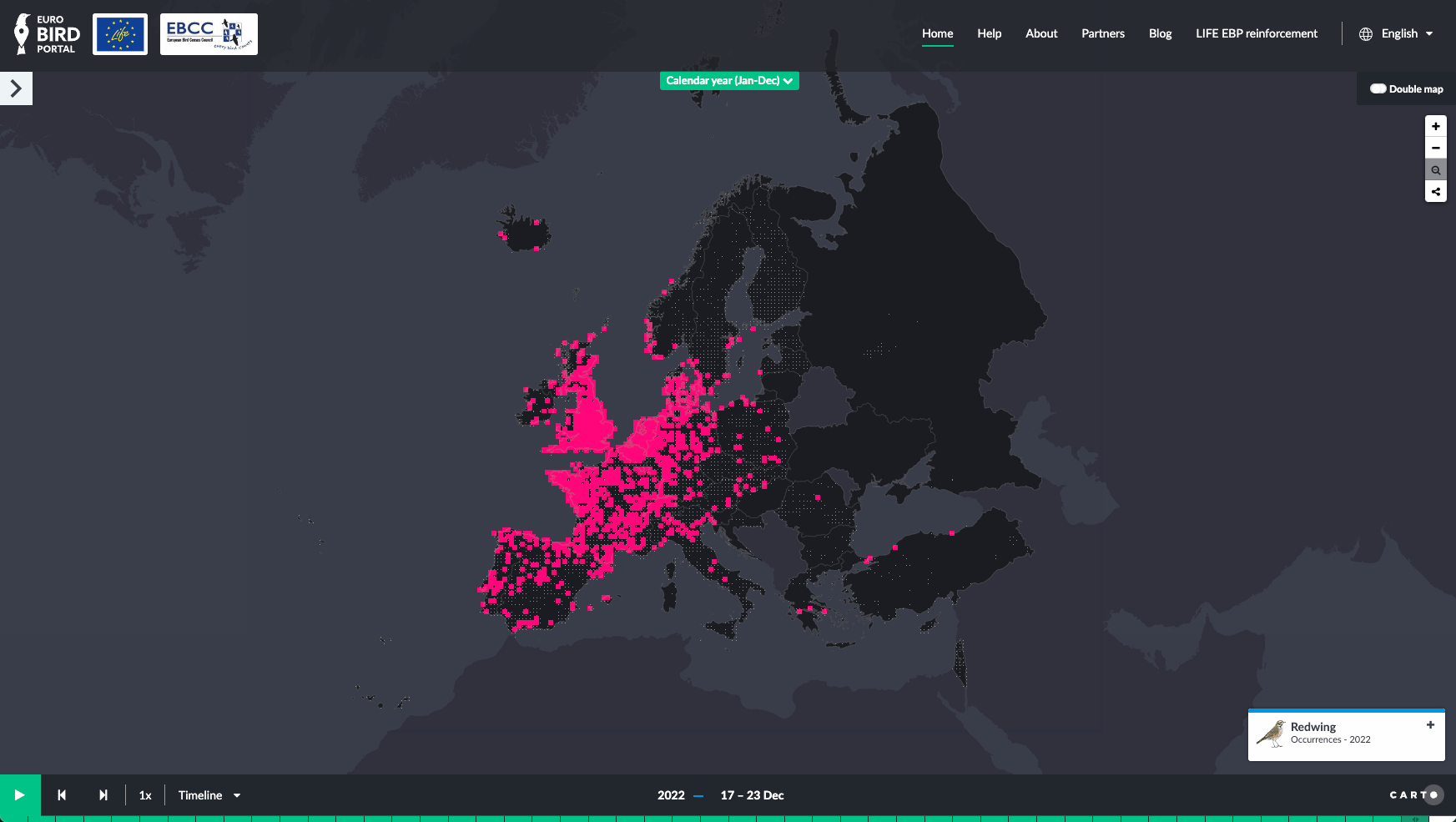The UK's smallest thrush, the redwing is a true nomad that rarely returns to the same wintering area. Their name comes from the distinctive red patches on their underwing.
Sally Jennings
The Redwing is the smallest thrush species in the UK, between the size of a robin and a starling. They are roughly 22cm long, with a wingspan of about 34cm, and a weight of 50–75 g.
© Allan Hopkins, Flickr
Description
Male and female Redwings look alike, with plain brown backs and high contrast black-streaked on the white underparts. They have black eyes, a yellow bill with a black tip, and pinkish legs.
© Stein Arne Jensen, Flickr
The distinctive orangey-red flanks and underwing, along with the creamy white stripe above the eye, are notable identification features. Young Redwings look similar but have pale streaks on the upper parts and lack the rusty flanks.
© Stein Arne Jensen, Flickr
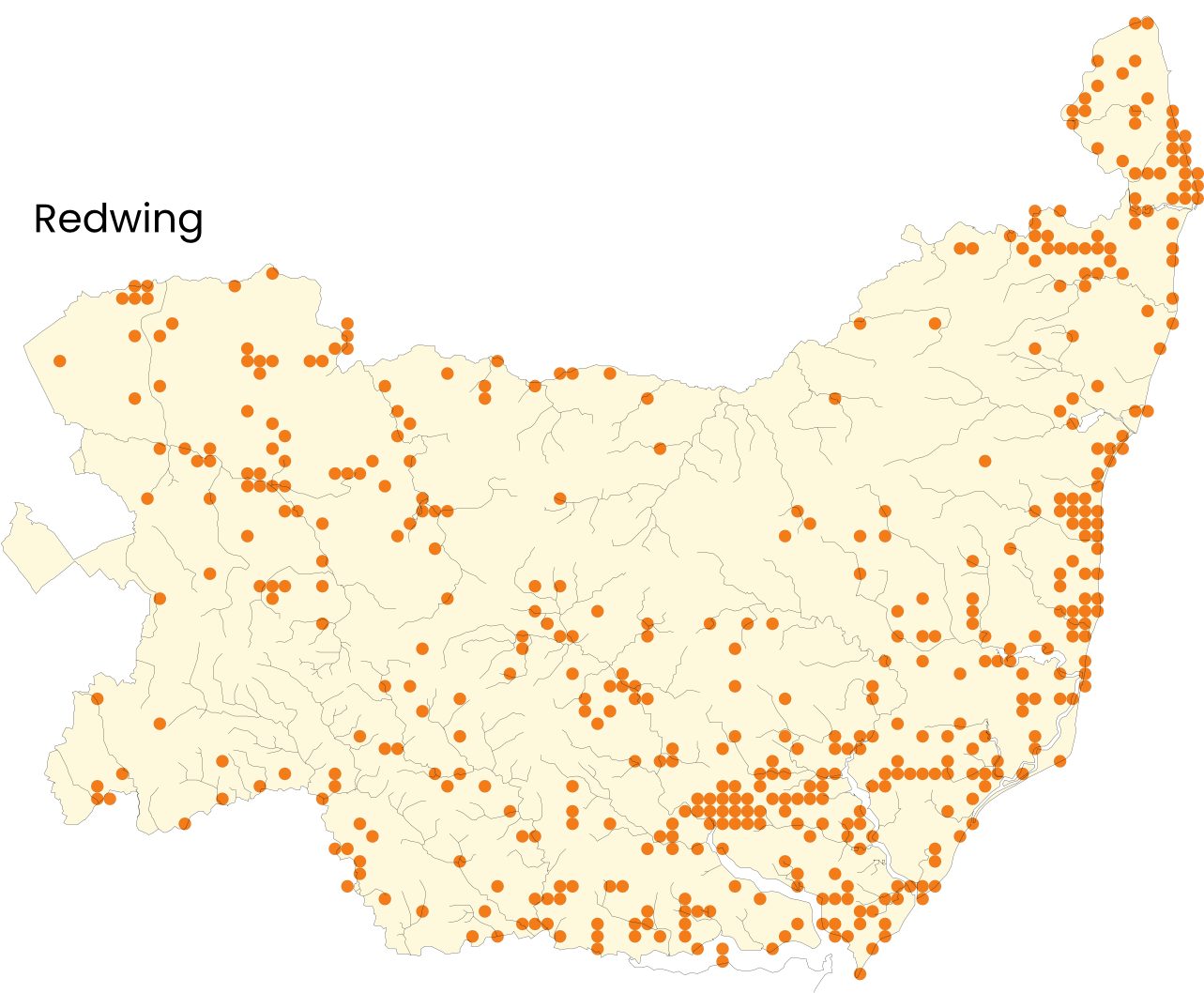
They breed from Iceland to northernmost Scotland and east through Scandinavia to Russia. They have recently expanded their breeding range to include northern Ukraine and southern Greenland.
They are migratory and spend the winter in warmer areas of Europe, north-west Africa, and southwest Asia, east to northern Iran. Those in areas to the west of the breeding range may be resident, while those in the far east can migrate at least 6,500–7,000 km to their wintering grounds.
Redwings are common in open countryside – thickets, open woodland, orchards, hedgerows and stubble fields – although they can sometimes be seen in gardens and parks in cold weather. Berry-producing shrubs and dense grassland are essential habitat requirements.
Distribution in Suffolk
Data from the 2007-11 Suffolk Bird Atlas
Redwings are Amber listed on UK Birds of Conservation Concern list.
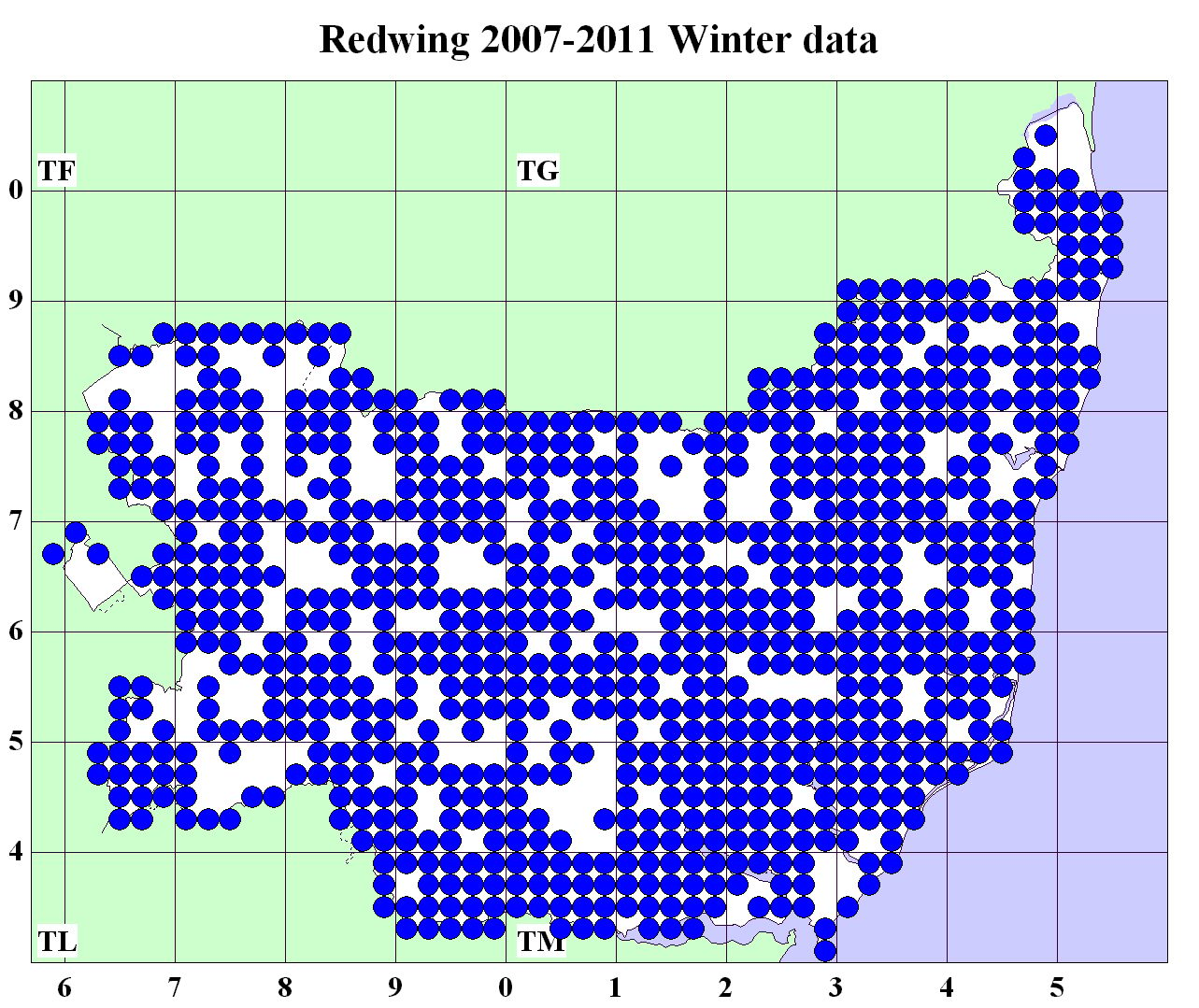
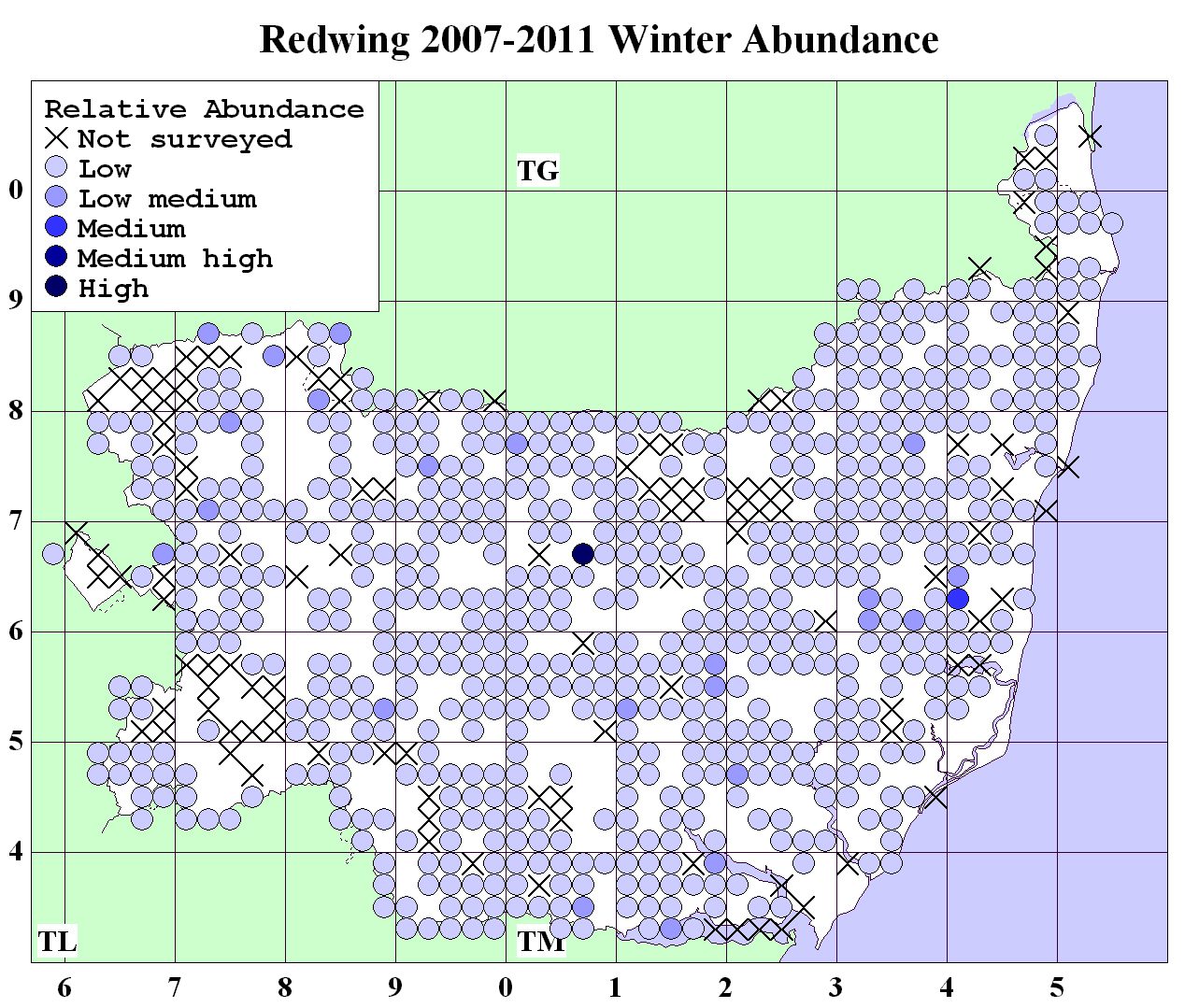
© Caroline Legg, Flickr
Did you know?
Redwings were the first birds to be shown to find fruit using ultraviolet vision. In an experiment, they chose UV-reflective berries over non-reflective ones.
Lifecycle
The first returning redwings are usually seen in late September, with significant movements in October. They often move at night, making a "Tseep" contact call that carries a long distance.
Males have an attractive song, but it is usually only heard in the breeding season.
Will Scott, XC684499. Accessible at www.xeno-canto.org/684499
Andrew Harrop, XC642108. Accessible at www.xeno-canto.org/642108.
Maxime Pirio, XC629456. Accessible at www.xeno-canto.org/629456
Frantz Barrault, XC835278. Accessible at www.xeno-canto.org/835278.
Their migrations are unusual, as they move in response to food supply and weather rather than using regular migration routes. Once here, they form mixed flocks of 10 to 200+ birds foraging alongside fieldfares, common blackbirds, and starlings.
Migration data map (website)
© Alan Piper, Flickr
Most Redwings only stay in the UK over winter, then return to their breeding grounds. However, around 25 pairs breed in the Scottish Highlands north of the Great Glen.
In spring, they return to their favoured habitats of mixed forests (conifer and birch) and tundra breeding grounds. Redwings nest on the ground or in low shrubs, laying four to six eggs. Their eggs are usually 2.6 x 1.9 cm, weigh 4.6g and hatch after 12–13 days.
The chicks fledge just 14 days after hatching, allowing the parents to have a second brood. Although fledged, the young remain dependent on their parents for another 14 days while learning to forage for themselves.
Adults moult between June and September, replacing their flight feathers while still feeding young.
© Ignacio Ferre Pérez, Flickr
Diet
© Stein Arne Jensen, Flickr
On arrival, while the weather remains mild, they hunt for snails, earthworms, slugs and insects. As winter deepens and the ground hardens, they forage for berries, particularly those of rowan and hawthorn trees.
Redwings can be mistaken for another winter visitor, the Fieldfare, or a common resident, the Song Thrush.
The Fieldfare is significantly larger, with a grey head, brown wings, and a warm brown band across the chest. The Song Thrush lacks the distinct supercilium and reddish flanks.
More...
If you'd like to learn more about this delightful little thrush, the BTO has comprehensive information on their website.
Similar birds
© Hedera.baltica, Flickr
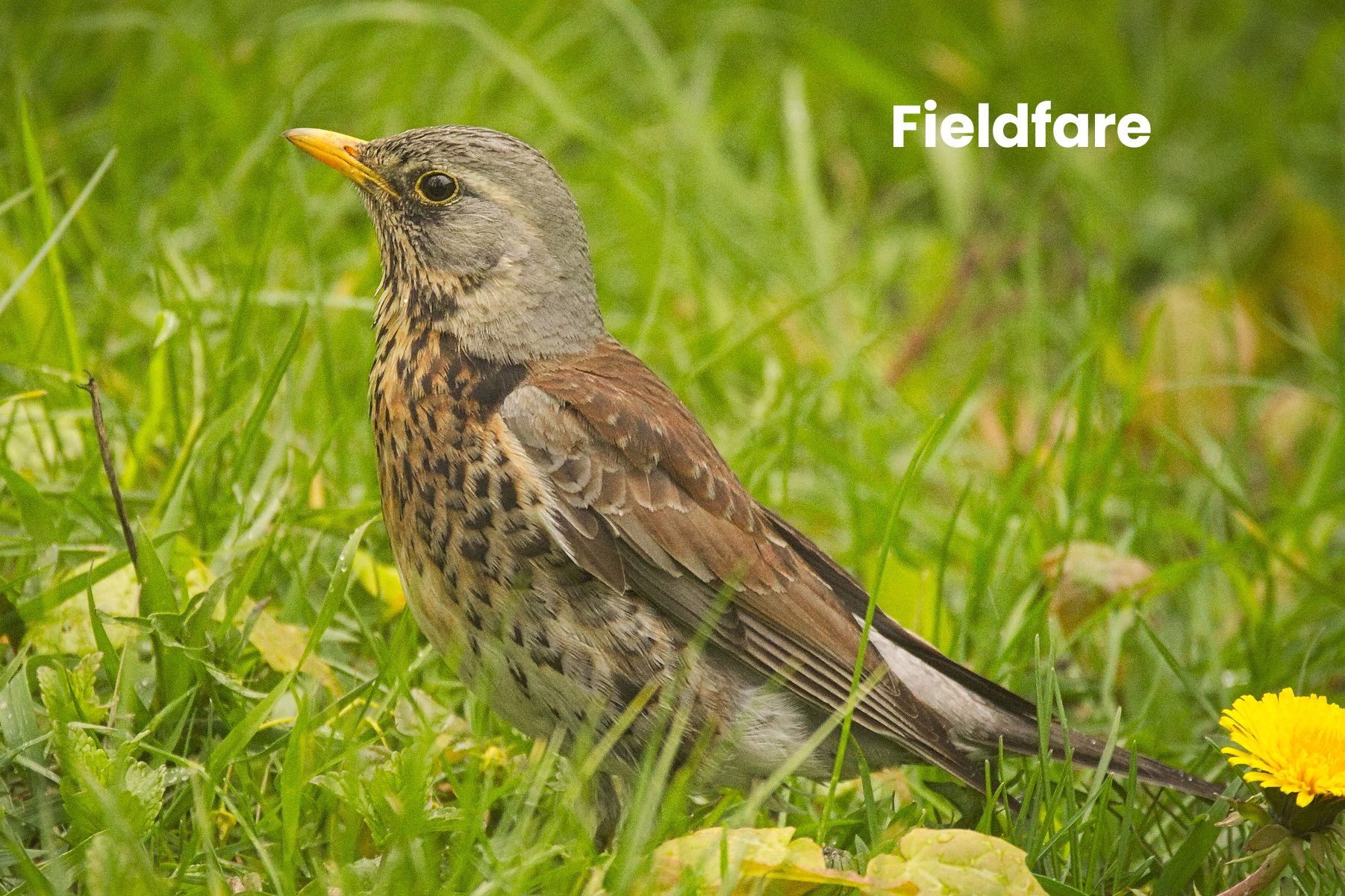
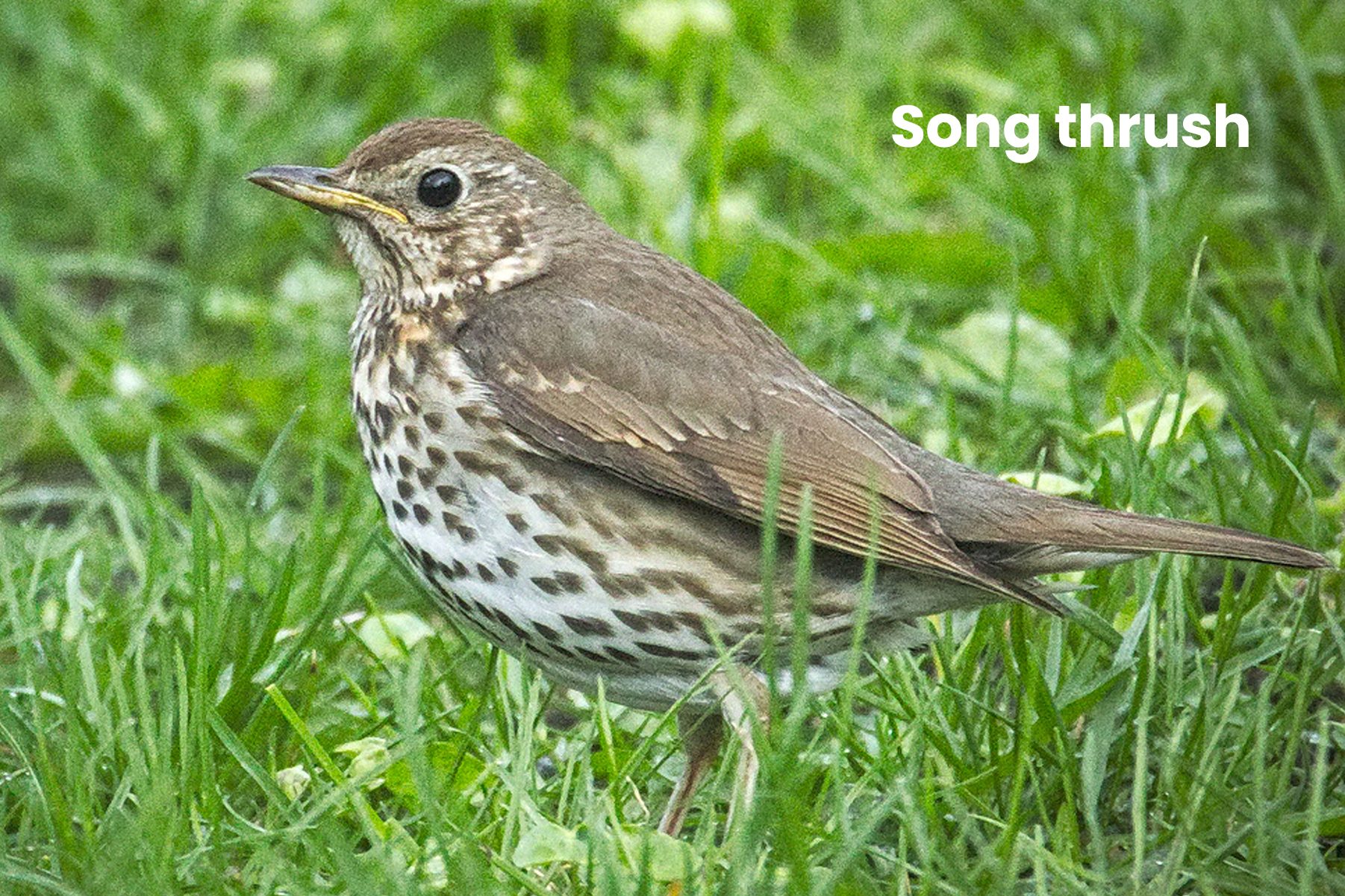
Spotting them
When to see them: autumn to spring.
Remember to record your sighting if you spot them in Suffolk!
© Brendan Ryan, Flickr


